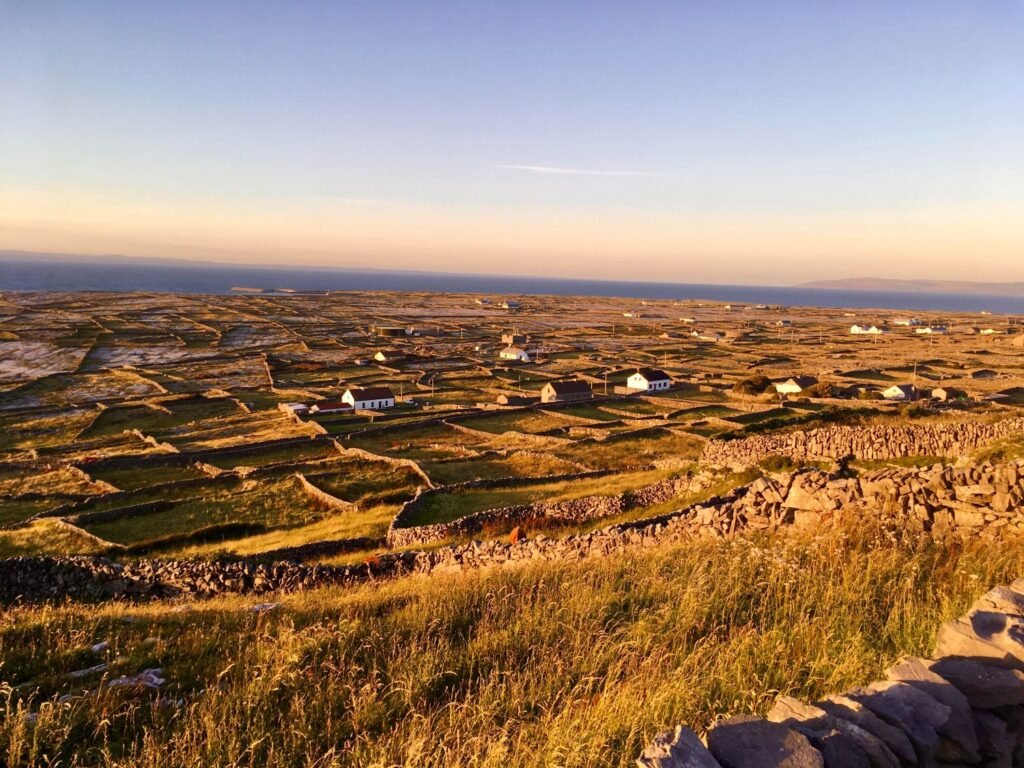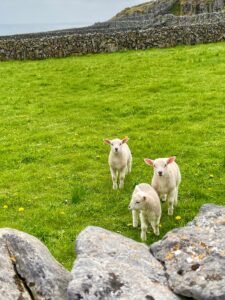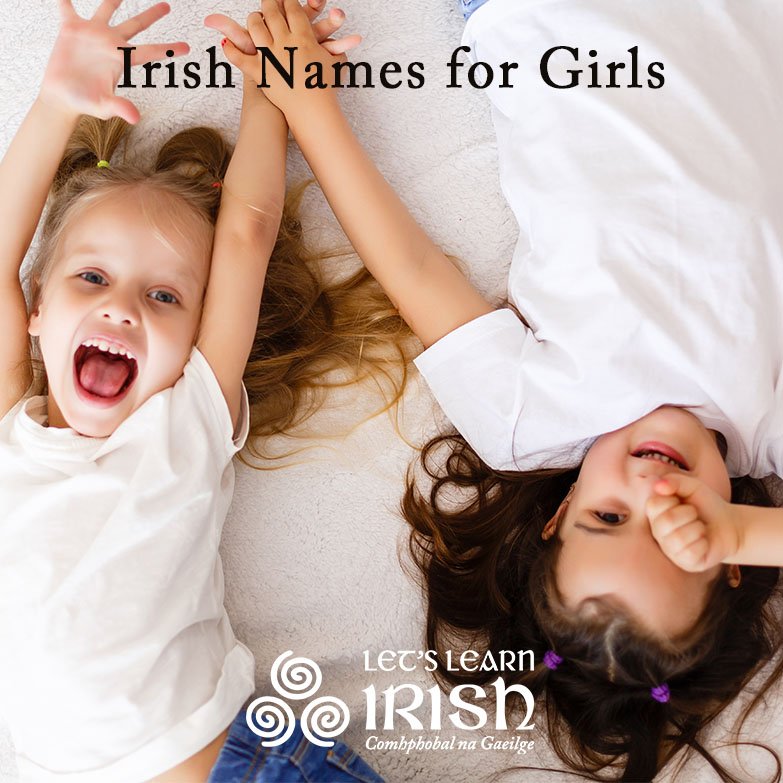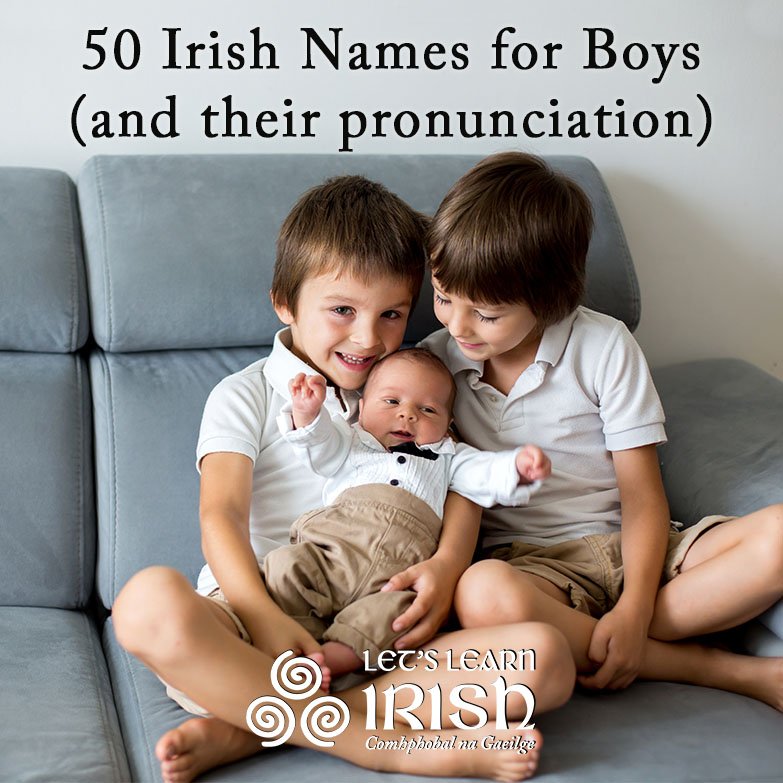Inis Meáin: My First Irish Language Course in the Gaeltacht

The beautiful and haunting Aran Islands lie off the coast of Ireland’s western seaboard where, for thousands of years, they have been battered by the mighty Atlantic Ocean. The islands are three in number – the northern island Inis Mór, nine miles long and three miles wide; Inis Meáin, three and a half miles by two miles and pear shaped; and the southern island, Inis Oirr, about two miles across and nearly round in shape.
 In 2015, I visited the middle isle Inis Meáin on a whim. It was my first visit to Ireland, and having spent the day bicycling around Inis Mór, I hopped aboard a small ferry bound for the neighboring island at sunset. The ferry harbor that greeted me was nearly deserted. No restaurants or shops were waiting to entice the few travelers who joined me on the boat. Everywhere you looked, there were waist-high walls intricately crafted of piled stones. As one person later told me, “The islanders are on another level with the quality of the stone wall building.” There was also a soul-nourishing stillness to be felt, as if I had stepped back in time to a calmer world – one I expected would have long since surrendered to modern technology and clatter. For nearly forty years, I have lived in Manhattan, one of the world’s busiest islands. How wonderful to experience the serenity of one of the most tranquil.
In 2015, I visited the middle isle Inis Meáin on a whim. It was my first visit to Ireland, and having spent the day bicycling around Inis Mór, I hopped aboard a small ferry bound for the neighboring island at sunset. The ferry harbor that greeted me was nearly deserted. No restaurants or shops were waiting to entice the few travelers who joined me on the boat. Everywhere you looked, there were waist-high walls intricately crafted of piled stones. As one person later told me, “The islanders are on another level with the quality of the stone wall building.” There was also a soul-nourishing stillness to be felt, as if I had stepped back in time to a calmer world – one I expected would have long since surrendered to modern technology and clatter. For nearly forty years, I have lived in Manhattan, one of the world’s busiest islands. How wonderful to experience the serenity of one of the most tranquil.
There are few sites and facilities on Inis Meáin: one simple pub (which inspired J.M. Synge’s 1907 drama, The Playboy of the Western World) and the once-thatched house where the playwright stayed for several extended visits. There is a pristine white chapel and a small convenient store/post office. Two Dúns, or stone forts, are the main attractions: one at the eastern side of Inis Meáin, looking over Foul Sound, and at the northwest end of the island, the majestic Dún Chonchuir (a miracle of stone piling and dated to the first century AD). Cows, sheep, goats, donkeys, and a few Connemara horses are conspicuous. Roughly 200 residents call this island home, and in this Gaeltacht (or Irish-speaking area), Gaeilge is voiced by most.
At this point, I had not yet started to study the Irish language, but I believe this is where I first heard it being spoken. I spent the next day walking the Inis Meáin terrain, surveying the stony scenery, hearing its captivating but bewildering language, and trying to capture this lovely, lonely island to memory. I vowed to return.

Jump to spring 2023. I had been taking Irish language classes with Let’s Learn Irish for several years but remained apprehensive to speak as Gaeilge outside of the classroom. By chance, I saw an online notification about a week-long Irish language course being offered for adults on Inis Meáin. Iontach! The price was affordable, and without delay, I secured a room at a bed-and-breakfast for two weeks around Eastertime.
I returned to Inis Meáin in early April. I was nervous but determined to speak as much Irish as I could. Suitcase in hand, I set off from the empty ferry harbor and walked alongside the maze of stone walls to find my lodgings. Then, to my sheer surprise, I was greeted by a farmer passing me on a tractor. “Dia dhuit,” he said to me in a matter-of-fact tone. Wait? What! I couldn’t believe my ears. I hurriedly answered back, “Dia is Muire duit!” and looked around to see if anyone else had heard our brief encounter as Gaeilge. My first “real world” interaction using the language was only witnessed by a rather non-plussed cow, but that greeting gave me all the confidence I needed.
 I had arrived a few days before classes were to begin and spent my time meeting people on the island. I sometimes eavesdropped on their Irish conversations to see if I could understand them. Admittedly, residents speak Irish quickly on Inis Meáin, but I could often get the gist of their discussions. I was happy to receive compliments from the locals on my cúpla focal – and many were impressed by my attention to pronunciation. The “sound” of the language (and its multiple dialects) has always been something stressed by the instructors at Let’s Learn Irish. Buoichas le Dia!
I had arrived a few days before classes were to begin and spent my time meeting people on the island. I sometimes eavesdropped on their Irish conversations to see if I could understand them. Admittedly, residents speak Irish quickly on Inis Meáin, but I could often get the gist of their discussions. I was happy to receive compliments from the locals on my cúpla focal – and many were impressed by my attention to pronunciation. The “sound” of the language (and its multiple dialects) has always been something stressed by the instructors at Let’s Learn Irish. Buoichas le Dia!
By luck, all but one of the students from my Irish course were also staying at my bed-and-breakfast. Irish (both broken and fluent) was spoken every day from the moment we woke up. I was the person who had traveled the farthest, coming from America, but there was a student from Germany and the others had come from all over Ireland. Laughter seemed to take over most conversations and – dare I say – I felt years younger laughing and chatting away as Geailge with mo chairde nua. Our classes were fun and geared for all levels. (Yes, newcomers were introduced to An Modh Coinníollach by the last day!)

The time flew. Weather was unpredictable and sometimes savage. I took a day visit to Inis Oirr. We learned to sow potatoes. There were church masses to attend in Irish; it was Easter, after all! There was even a funeral. I hesitated attending this since I thought it would be just for family and community. However, a nice lady said, “Oh I think they would be pleased to know that a complete stranger took the time to attend.” It was a lovely service – just one memory of so many.
I encourage anyone to try an in-person language course in any of the Gaeltachts if they have the opportunity. One of the best things about being a student of Irish is the global club of Gaeilgeoirí, of which you are an instant member. It is a community of all ages, nationalities, genders, sexualities, and backgrounds. I look forward to returning to Inis Meáin, but I’m more convinced than ever that l can use Irish every day, without the need of being on a remote island in the Atlantic.
Beatha teanga í a labhairt – It’s the life of a language to speak it!
Join the online Irish community – beidh fáilte romhat!
Take a Course, join a Comhrá session or attend a Ceardlann.
For more, follow us @LetsLearnIrish – bígí páirteach!





